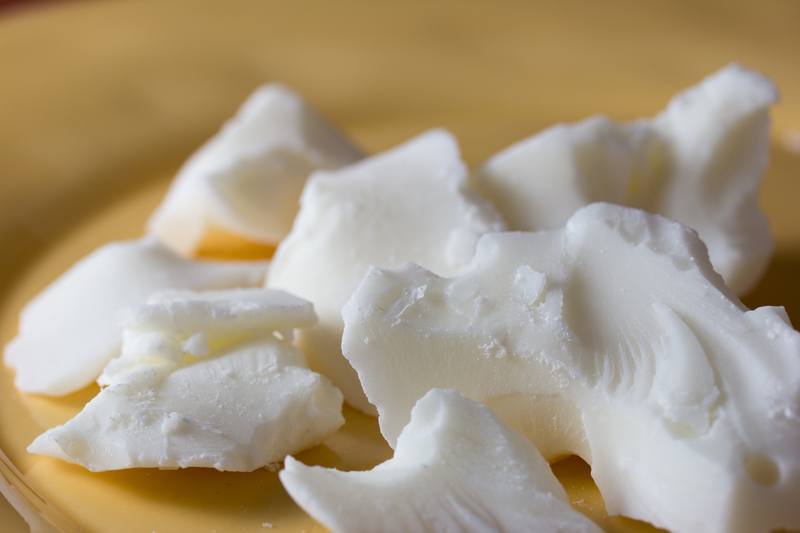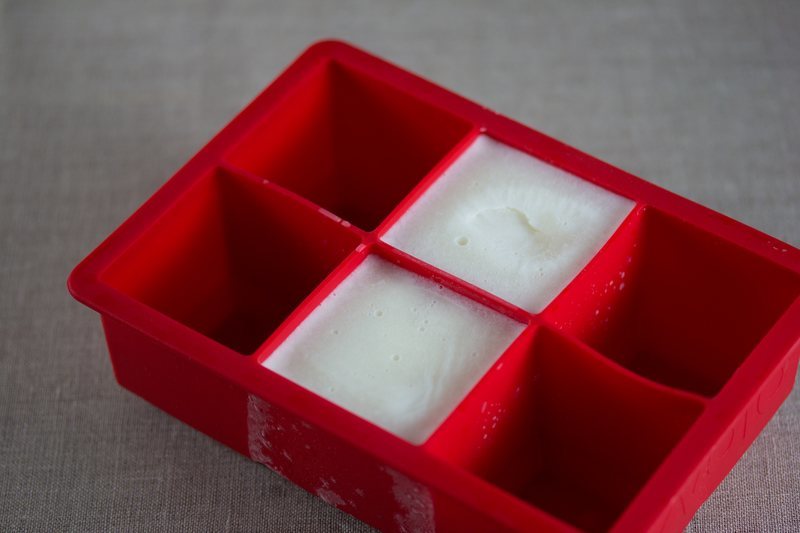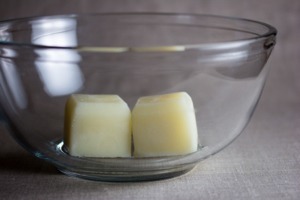Veganbaking.net
Vegan Baking Recipes
Fats
Vegan Shortening Recipes
Vegan Shortening - Cocoa Butter Base
Vegan Shortening - Cocoa Butter Base
2

Shortening definitely has its place in vegan baking. From pie crusts, shortbreads and puff pastry, it’s a basic building block for texture. This solid fat is so integral to these types of desserts because it alters the way gluten is formed in baked items that utilize wheat-based flours. For more on the food science of shortening, check out my article on how to make vegan shortening.My original recipe for vegan shortening utilized a mixture of coconut oil and vegetable oil such as canola, light olive oil or rice bran oil. The coconut oil is solid at room temperature. When it’s mixed with a certain ratio of fats that are liquid at room temperature, a certain level of softness can be dialed in that makes it suitable to use as shortening. This recipe utilizes deodorized, also known as refined cocoa butter.
Why would you want to make your own shortening?
Why go through the hassle of making your own shortening? There are many reasons:
- The United States is one of the only places in the world where shortening can be found.
- Most of the shortening available in the US is derived from palm oil, which, as of this writing, is associated with environmental destruction in Sumatra.
- Much of the shortening commercially available has additives that you might want to choose to avoid.
- Making your own shortening allows you to unlock more creativity with your baked items. For example, if you want to add a layer of white chocolate or hazelnut flavor to your dessert, you could swap out some or all of the refined cocoa butter for unrefined cocoa butter and some or all of the canola oil with hazelnut oil. How about a hazelnut shortening that doesn’t resort to hazelnut extract for flavoring? Making your own Vegan Butter or Shortening and using hazelnut oil allows this to be possible! Toasted sesame oil in a vegetable pot pie crust? Why not?
What is Cocoa Butter?
Cocoa Butter is the fat from the cacao bean, the bean used to make chocolate. It’s had all of the dark cocoa solids removed so it’s an opaque white instead of chocolate colored. Even though the dark solids have been removed, cocoa butter in its unrefined state still has a certain level of chocolate flavor. It’s important to use refined, also known as deodorized cocoa butter in this shortening recipe in order to produce a flavor-neutral shortening.
Refined cocoa butter has been passed through a filter to remove all traces of chocolate flavor. If you’d like to leverage chocolate flavor in your shortening, by all means, use unrefined cocoa butter.


Where do you find Cocoa Butter?
I usually order my cocoa butter online because it’s not yet available at my local health food store. When ordering online, it’s very important to confirm that your refined or unrefined cocoa butter is food grade. If it doesn’t specify food grade, assume that it’s cosmetic grade and look elsewhere. Food grade fats are processed in a way that either adequately preserves or removes flavor. For example, if you’re looking for good quality unrefined cocoa butter, food grade will ensure that the manufacturer uses processes that preserve maximum chocolate flavor. Conversely, food grade refined cocoa butter will be handled in a way that removes as much of the flavor as possible.
The opposite of food grade cocoa butter is usually cosmetic grade. Cosmetic grade cocoa butter may or may not be safe for human consumption, depending on the processes used for preparing it for market. In my experience, cosmetic grade cocoa butter usually contains slight off-flavors, making it unsuitable for food applications if even if it were refined in a way that would be safe for food consumption.
Why use Cocoa Butter?
To understand why cocoa butter is so valuable in vegan shortening, we must understand the limitations of coconut oil. Coconut oil has a melting temperature of about 77F (25C). Cocoa butter melts at about 93-100F (34 to 38C). This is more in line with the melting point of palm oil, which is 95F (35C) and animal-based fats. The lower melting point of coconut oil means that once it’s mixed with vegetable oils, the shortening starts to melt at somewhere right below 77F (25C). In the United States this isn’t much of a concern, but in hotter climates, your shortening will often melt so quickly that it’ll be partially liquefied before you get a chance to bake your dough. Cocoa butter gives you added insurance that your dough will remain at the optimal texture before it goes into the oven in these hot conditions.
This Vegan Shortening recipe utilizing cocoa butter, in contrast to the vegan shortening that utilizes coconut oil, has a melt point between 80 and 85F (27 to 29C).
Due to the slightly lower melting point of coconut oil, I realized that it would be beneficial to have recipes for Vegan Butters, Shortenings and Frostings with higher melt points. I mean, have you seen frosting slide off a cake in hot weather? What a bummer!
Regular Vegan Butter - Cocoa Butter Base is another example of a Vegan Butter that likely has a slightly higher melting point than Regular Vegan Butter - Coconut Oil Base.

Learn more about the melting temperatures of fats.

Learn more about the melting temperatures of fats.
Vegan Shortening Recipe - Cocoa Butter Base
6 Tablespoons + 2 teaspoons refined cocoa butter (72 grams)
9 Tablespoons + 1 teaspoon (140 ml) canola, light olive oil or rice bran oil
1) Melt and mix your fats
Melt the cocoa butter in a microwave so it's barely melted and as close to room temperature as possible. Measure it and add it and the canola oil to a food processor. Making smooth shortening is dependent on the mixture solidifying as quickly as possible after it's mixed. This smoothness depends on the fats solidifying before they get a chance to separate. This is why it's important to make sure your coconut oil is as close to room temperature as possible before you mix it with the canola oil.
2) Transfer the Vegan Shortening to a mold and freeze
Process for 1 minute, scraping down the sides halfway through the duration. Pour the mixture into a mold such as an ice cube tray and place it in the freezer to solidify. An ice cube mold works well. The vegan shortening should be ready to use in about an hour. Store it in an airtight container in the refrigerator for up to 3 months or wrapped in plastic wrap in the freezer for up to 2 years. This recipe makes 1 cup, 215 grams, or the equivalent of 2 sticks Cocoa Butter Vegan Shortening.




